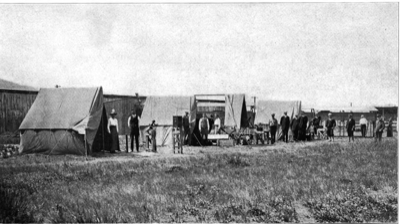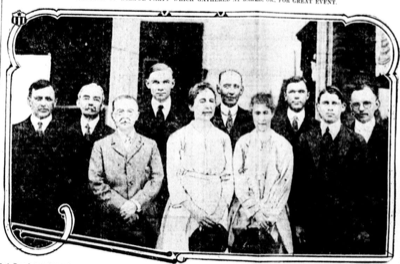Eclipse of 1918, Baker, Oregon
Howard Russell Butler, American, 1856–1934
Solar Eclipse, 1918
Oil on canvas, left panel of triptych
Princeton University
PP357
Edward D. Adams (an industrialist, philanthropist, trustee of the Metropolitan Museum of Art, and ardent amateur astronomer) suggested to Professor Samuel Mitchell (University of Virginia) that the artist Howard Russell Butler accompany Mitchell, Adams, and the US Naval Observatory Eclipse Team in 1918 to paint the eclipse. Butler was noted for his ability to record transient phenomena, such as the aurora or a sunset, using a shorthand notation of his own devising. Butler accepted the challenge, although he had never seen a total eclipse, and worked closely with Mitchell and the other USNO astronomers in the weeks before the eclipse. Butler’s painting, completed in the hours after the eclipse from his memory and his notes, was a success, and Mitchell wrote, “The astronomers who saw the 1918 eclipse and who have seen [Butler’s painting] look upon it as . . . true both as to form and color, a great work of art which has the added advantage of being scientifically accurate. The world of science owes a great debt of gratitude to Mr. Butler.”


